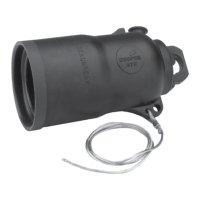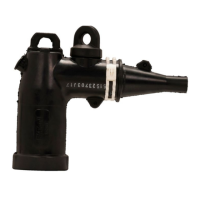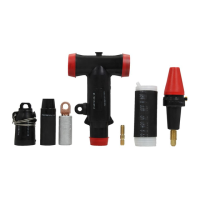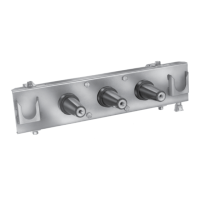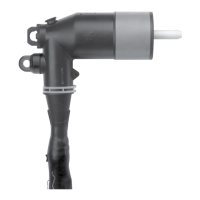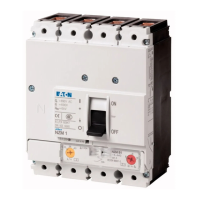Step 2.
Remove concentric neutral wires or jacket
ote: N Care should be taken to not cut or score the
neutral conductors when cutting the cable jacket.
• Measure reference length “B” from end of cable. (Refer
to Figure 4 and Table 2 to determine variable “B” length.
• For jacketed neutral cable, remove jacket to “B”
dimension.
• For unjacketed neutral cable, bind neutral wires using
three (3) wraps of tape at “B” dimension.
• Pull back concentric neutral wires. Allow enough extra
concentric neutral wires to connect to ground after installation
and allow movement to insulated standoff bushing.
Step 3.
Remove insulation shield
• Remove insulation shield length “C” from end of cable.
(Refer to Figure 5 and Table 2 to determine variable “C”
length.)
ote: N Do not cut or nick insulation.
Step 4.
Put tape marker in place
• Measure 1” (25 mm) from end of insulation shield.
(Refer to Figure 5.)
• Wrap two turns of tape to serve as marker for cable
adapter location.
Step 5.
Remove conductor insulation
ote: N Do not pencil cable.
• Remove insulation exposing bare conductor to length of
“D”. (Refer to Figure 6 and Table 2 to determine variable
“D” length.)
ote: N Do not unwind conductor strands.
Step 6.
Bevel insulation
• Remove sharp edge of insulation by beveling at a 45°
angle for approximately 1/4” (6 mm). (Refer to Figure 7.)
"D"
(See Table 2)
Tape Marker
Bare Conductor
Insulation
Figure 6. Line illustration of bare conductor length.
Figure 4. Line illustration of removing concentric neutral
wires.
Bushing
Cable
"A"
(See Table 2)
"B"
(See Table 2)
Concentric
Neutral Wires
Bevel
Insulation
1/4"
(6 mm)
Figure 7. Line illustration of insulation bevel.
Figure 5. Line illustration of cable stripback.
"C"
(See Table 2)
1"
(25 mm)
Tape marker Insulation shield
Insulation
4
600 A 15 kV and 25 kV class BT-TAP connector system installation instructions MN650004EN May 2021
Catalog data MN650004EN
Effective May 2021
Deadbreak apparatus connectors
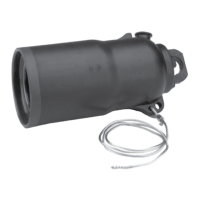
